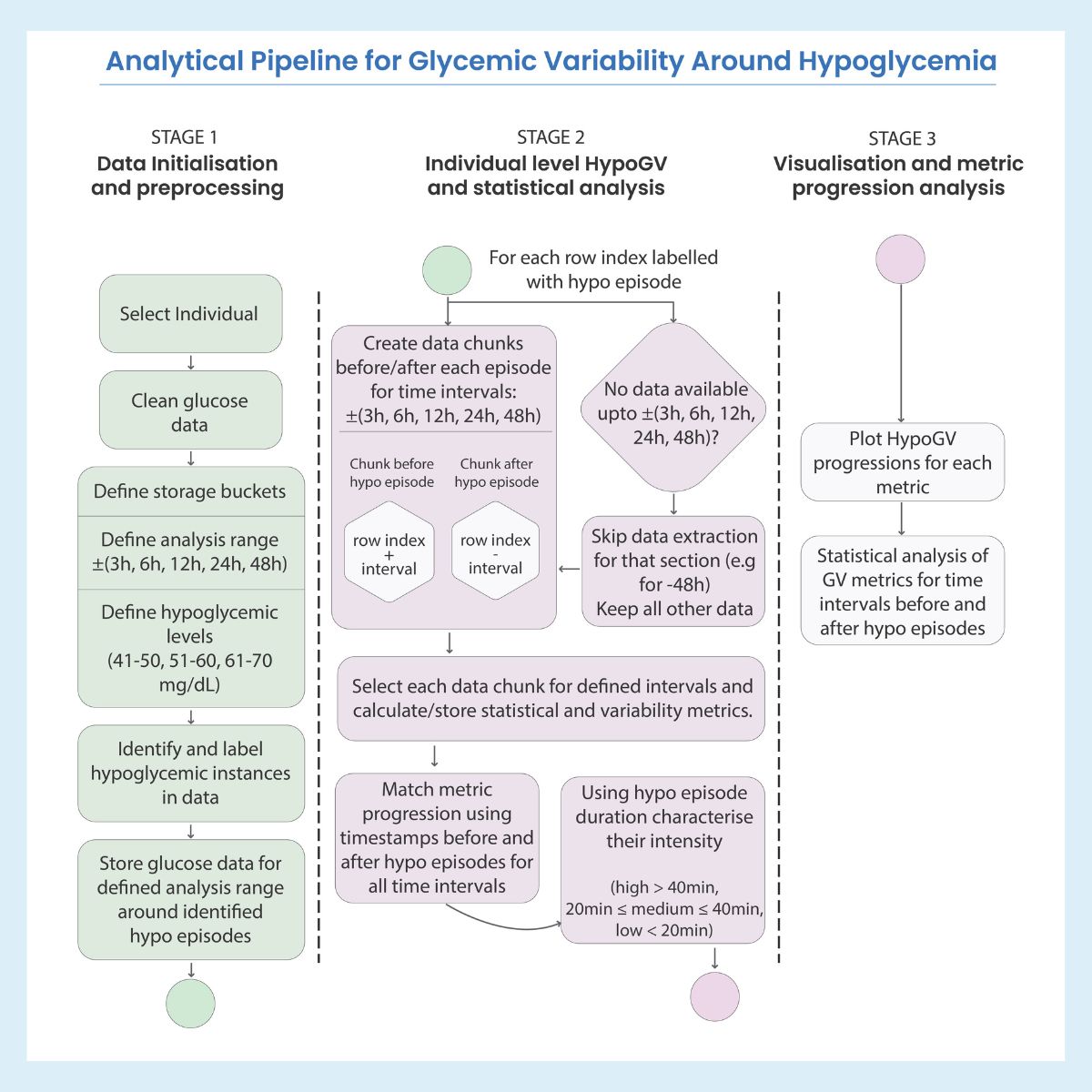Exploring Glycemic Variability in Type 1 Diabetes

Exploring Glycemic Variability in Type 1 Diabetes: New Research from CeADAR
At CeADAR we are dedicated to advancing AI across a broad range of industries and sectors.
Recently CeADAR data scientists have published a research preprint in the healthcare sector titled, “Glycemic Variability Before And After Hypoglycemia Across Different Timeframes In Type 1 Diabetes With And Without Automated Insulin Delivery”.
This study investigates how glycemic variability (GV) fluctuates before and after hypoglycemia in individuals with Type 1 Diabetes, comparing those using automated insulin delivery (AID) systems with those who are not. Led by a CeADAR team —Ahtsham Zafar, Dr Abiodun Solanke, Dr Arsalan Shahid—and OpenAPS developer Dana Lewis, this research provides key insights into optimizing diabetes management.
Key insights:
- GV rises up to 48 hours around hypoglycemia events
- AID helps improve stability, especially in females
- Long episodes of low glucose = slower recovery
- Findings may guide smarter Automated Insulin Delivery AID systems and personalised care
Project Funding and Partnerships
This work was performed under a grant from the Leona M. and Harry B. Helmsley Charitable Trust (Grant #: 2407-07175), as part of the project titled NetIOB and Hybrid Modeling to Manage Exercise with T1D (AID and Non-AID). Helmsley Charitable Trust has awarded over $12 million to initiatives aimed at helping individuals with Type 1 Diabetes safely integrate exercise into daily life.
CeADAR in collaboration with Stanford University and with Dana Lewis (developer of OpenAPS) was awarded $2.2 million in funding for this project.
Read the full preprint research paper: https://arxiv.org/abs/2504.01624

